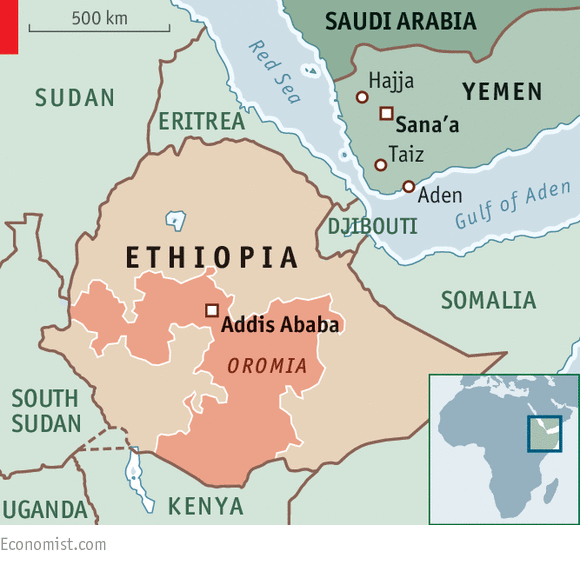Largest ethnic group in Ethiopia continues to rally against the government despite crackdown.
Their school was closed in January as the Ethiopian government began what its critics call a crackdown on protests by the Oromo, the country's largest ethnic group.
It is uncertain how many people have died in clashes between security forces and protesters since November, when a series of demonstrations began.
Local estimates put the figure at between 80 and above 200. The New York-based Human Rights Watch has said that more than 200 people may have died in about six months, a figure the government denies.
"With regards to allegations from human rights groups or self-styled human rights protectors, the numbers they come with, the stories they often paint, are mostly plucked out thin air," Getachew Reda, the information minister, told Al Jazeera.
Abi and Dereje's mother was among those shot in January. She was hit by a bullet in the neck. Despite receiving medical treatment, she died of her wounds in March.
"The little girl cries and keeps asking where her mother is. We feel her pain," said the children's grandfather Kena Turi, a farmer. "The older one cried when his mother was shot and died, but now it seems he understands she's gone."
Oromo students began rallying to protest against a government plan they said was intended to expand the boundaries of Addis Ababa, the capital, into Oromia's farmland.
Protests continue
Oromia is the country's largest region, and many there believe the government did not want to redevelop services and roads, but that it was engaged in a landgrab.
Though the government shelved its "Integrated Development Master Plan" due to the tension, protests continued as the Oromo called for equal rights.
In February, another anti-government rally turned violent. Nagase Arasa, 15, and her eight-year-old brother Elias say they were shot in their legs while a demonstration happened near their home.
"I was in the back yard walking to the house when I was shot," Nagase told Al Jazeera.
"My brother was in the house. I couldn't walk I was bleeding. Then I was hit again when I was on the ground I felt the pain then my brother came to help me and he was shot too."
Ethiopia has an ethnically-based federal system that gives a degree of self-rule to the Oromo people.
But the Oromo opposition, some of whose members have been detained, says the system has been corrupted by the ruling coalition, the Ethiopian People's Revolutionary Democratic Front.
A 'marginalised' community
Merera Gudina, an Oromo politician, said that members of his community feel marginalised — excluded from cultural activities, discriminated against because of their different language, and not consulted in political or economic decisions.
With double-digit growth over the last decade, Ethiopia has one of the fastest-growing economies in the world, but the majority of the Oromo remain poor.
"Until the Oromo's get their proper place in this country I don't think it [dissent] is going to go. The government wants to rule in the old way; people are resisting being ruled in the old way," Gudina said.
Reporting and recording human rights abuses is also risky, activists told Al Jazeera. Local and foreign journalists said attempts were made to intimidate them, with some detained.
Al Jazeera spoke with local reporters who said they were too afraid to even try and cover the issue.
"It's very dangerous. Everybody is living in fear. They imprison people every day. People have disappeared. Doing this work is like selling my life," a human rights activist told Al Jazeera, speaking on the condition of anonymity.
Government rejects claims
Kumlachew Dagne, a human rights lawyer, said there was a need for "public forums and consultation for debates on public policy issues" to allow for different views to be heard. He added that the protesters who were injured or killed had not been armed.
"Many of those people were killed after the protests took place many of the people were shot in the back some were shot in the head, which shows that these people were not armed," he said.
"They were peaceful demonstrators. That is consistent with reports we had from victims' families."
The government rejects such claims as exaggerated or fabricated.
"People, whether they are civilians or security officials who have been involved in an excessive use of force, will be held responsible," Reda said.
He said the government would consult with the Oromo people and "address the underlying problems".





